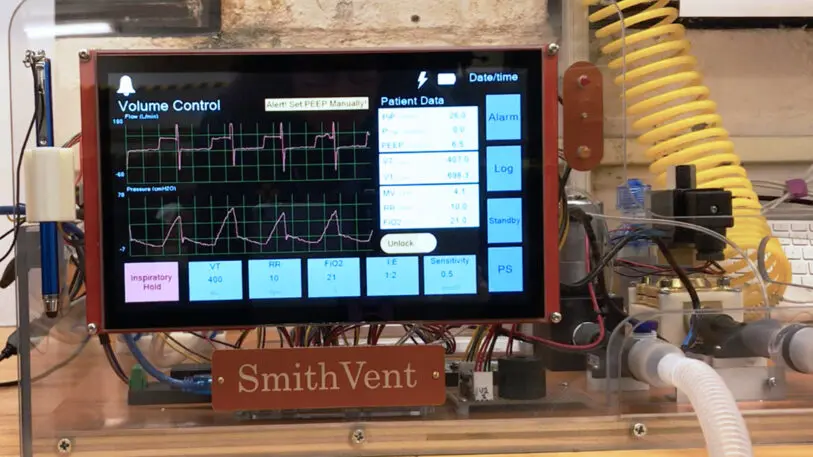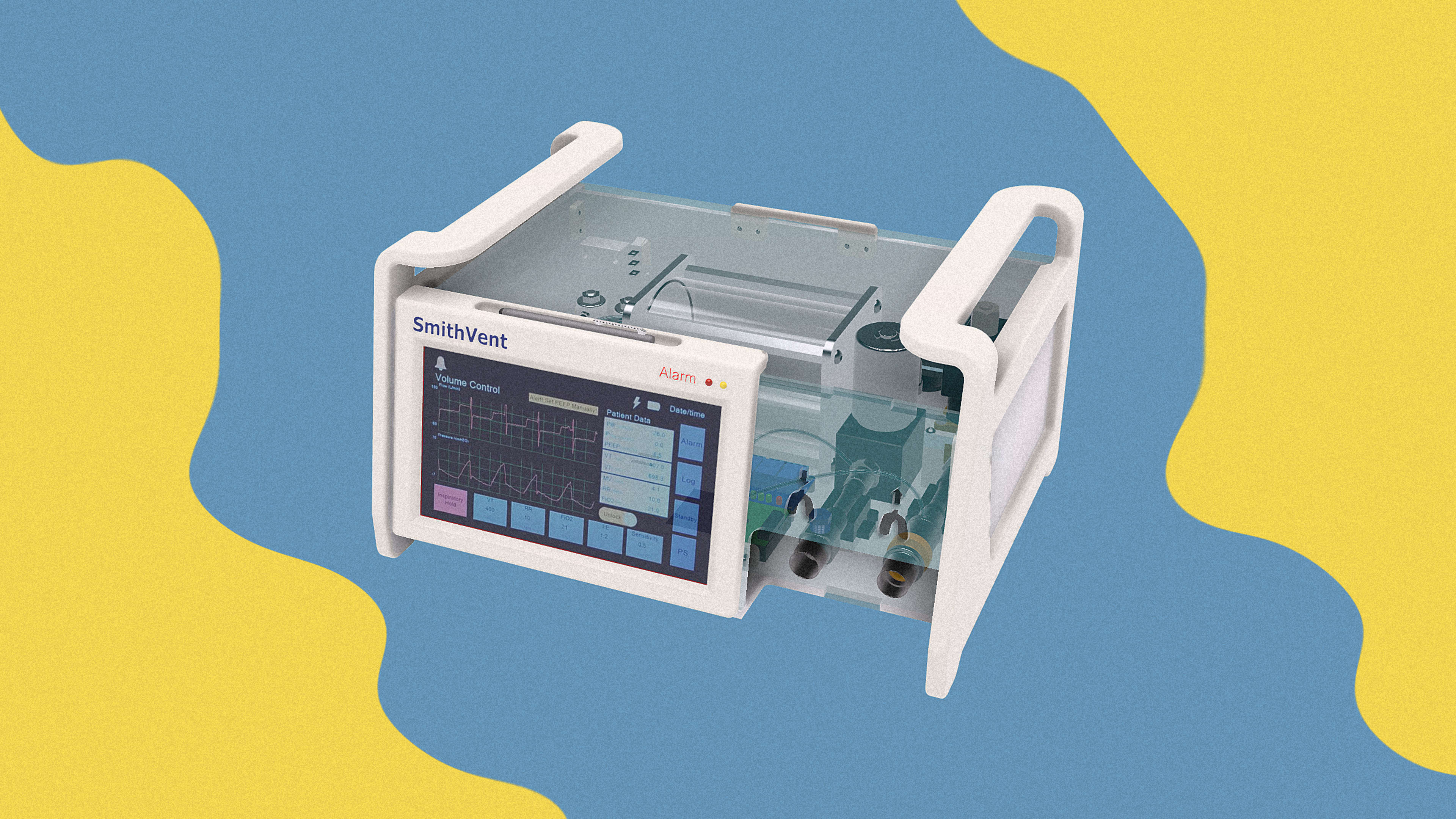We thought that talk of ventilator shortages was done in the U.S., that we’d powered through peak demand from COVID-19 patients with some clever hacks. Now in places like Houston, where COVID-19 is spiking while hospitals reach capacity, that might not be the case. Ventilator shortages are a real issue that still lingers not just in parts of the U.S., but across 10 African countries, too.
And it’s at this very moment that the CoVent-19 Challenge—a contest started by Massachusetts General Hospital to develop a rapidly manufacturable ventilator—has announced its winner. Of 200 submissions, a team of alumni, staff, and faculty from Smith College has taken the top prize with a design called SmithVent, edging out another design proposed by the lauded design firm Fuseproject. The SmithVent costs a tenth of the price of a normal ventilator, and the plans are being distributed open source for anyone to use or refine.
“We never came into this with the goal of creating a company,” says Susannah Howe, design clinic director and sophomore class dean at Smith College.

Studying images of the design, it certainly doesn’t look all that radical. And in many ways, the design isn’t fundamentally different from any ventilator on the market. What’s groundbreaking is that if you have a little engineering know-how, you could source its parts from shops like Amazon and Adafruit, 3D-print much of the rest, and build it yourself for $2,500.
No one on the Smith College team had ever studied or built ventilators before. So to tackle the project, the dozens of volunteers, most of whom also had day jobs, broke into small teams. They handled specific sub-projects to address airflow, part modeling, and user interface. Each of these projects was addressed in a series of five-day design sprints, with the globally based team managing tasks in Google Docs and meeting on Zoom.
While the ventilator industry is a specific niche, the team had a good baseline to understand ventilator design, thanks to a lot of available literature on the topic, including that provided by an earlier ventilator project out of Italy. A ventilator is really a series of valves and sensors to control air flow in a foolproof way. It’s necessary to treating serious cases of COVID-19, which can penetrate the lungs and cause inflammation that prevents breathing. The real challenge for this project was to create a ventilator design with parts that could be easily sourced during a pandemic, and when they couldn’t, create other parts that could be rapidly fabricated.
One part in particular, the solenoid valve (which uses electricity to open and close), was sourced from a major medical company. For many of the other 60 off-the-shelf parts, the team had to look beyond the typical medical manufacturers that had long backlogs. “We sourced some parts initially from medical distributors, and those were the parts that had really long lead times,” says Howe. “[We heard] ‘the lead time on that is eight weeks.’ We don’t have eight weeks! Those were the ones we had to come up with workarounds for.” So parts were ordered from publicly available suppliers instead. The big challenge was figuring out which parts could arrive in time, then designing and fabricating the parts that could connect them together. The team produced 15 parts from scratch to complement the 60 off-the-shelf parts.

Howe admits this approach wasn’t optimal in terms of engineering efficiency, because they had to design around what they could get. The team also didn’t have time to validate and incorporate many of the 3D-printable ventilator parts that are currently being distributed across the open source community. In theory, some of those parts could be integrated into this design, reducing the number of off-the-shelf pieces you need to purchase.
But while the SmithVent might not be a perfectly optimized design for all sorts of reasons, it’s something more important: It’s a producible design, even as we’re still in the middle of the pandemic.
According to the CoVent team, the next step for SmithVent is to be independently verified by a third party. From there, CoVent will pursue FDA approval while also working with the Nigerian National Agency for Science and Engineering Infrastructure to see if it might be manufactured overseas. They’ve already received some interest in using the design in Nigeria, as the country battles COVID-19 amid a turbulent debate between local doctors and the government. In the meantime, the team is sharing its designs online here, and SmithVent project manager Astrid Landeau promises to make her team available to assist any organizations that try to build the ventilator. “We are going to support anyone who wants to use it,” says Landeau.
Recognize your brand’s excellence by applying to this year’s Brands That Matter Awards before the early-rate deadline, May 3.
